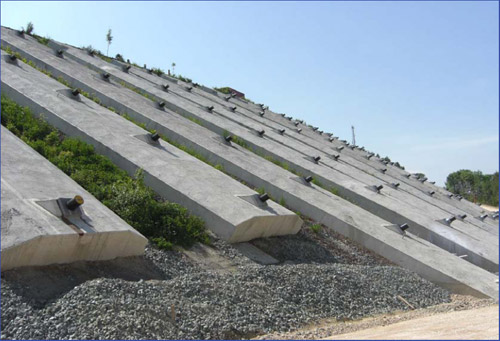Reliable Rock Anchors for Secure and Secure Foundations
In the realm of civil design, the function of reliable rock supports can not be overemphasized, as they are crucial in developing secure and stable foundations across a range of applications. Comprehending the various types of rock anchors, their specific applications, and the details of installation and upkeep is important for optimizing their efficiency.
Sorts Of Rock Anchors

Passive supports count on the weight of the framework and the surrounding dirt or rock to offer resistance. They are commonly made use of in applications where very little activity is anticipated. Energetic anchors, on the other hand, involve the application of tension with a high-strength cable or rod, developing a pre-stressed condition in the support. This kind is specifically advantageous in dynamic atmospheres, such as landslide-prone areas.
Grouted supports are one more substantial category, in which a steel bar or cable television is put right into a drilled hole, adhered to by a cementitious grout. As soon as cured, the grout bonds with the bordering rock, creating a durable anchoring system. Each kind of rock anchor uses unique advantages based on the certain geological conditions and structural needs, consequently playing an essential duty in the overall integrity and longevity of built centers.
Applications in Construction
Rock anchors play a crucial function in different building applications, offering necessary assistance and stability in varied environments. These ingenious services are utilized in tasks ranging from large-scale facilities growths to smaller residential frameworks. One of the main applications of rock supports is in the stabilization of slopes and preserving walls, where they aid stop dirt disintegration and maintain structural honesty.
In addition, rock anchors are instrumental in securing structures for bridges, passages, and skyscrapers, guaranteeing they can hold up against lateral forces such as wind and seismic task. Their convenience permits for setup in tough geological problems, making them optimal for projects in hilly or rough surfaces.

Key Choice Requirements
Picking the ideal rock support for a particular application needs mindful consideration of several key standards. The geological problems of the website have to be extensively analyzed. Understanding rock type, strength, and security is necessary to make certain that the anchor will perform efficiently under tons problems.

Another vital element is the rust resistance of the support materials. In settings revealed to wetness or chemicals, utilizing corrosion-resistant materials will certainly prolong the life expectancy of the anchors and maintain architectural integrity in time.
Furthermore, the support's setup method must align with the job's needs and constraints. Relieve of installation, along with the potential effect on surrounding frameworks, must be considered.
Installment Techniques
Reliable setup strategies are essential for the successful efficiency of rock anchors. Proper installment ensures that the supports attain the wanted load-bearing capacity and security within the geological conditions. The primary step in the installment process involves site assessment, where geological studies identify the rock kind, problem, and any possible difficulties.
When the website is examined, the proper exploration method have to be picked-- options consist of rotary drilling, ruby boring, or percussion exploration. The selection depends on rock hardness and ecological factors to consider. Exact boring deepness and angle are necessary to make certain that the anchors straighten with structural requirements and tons distribution.
After drilling, the following phase involves cleaning the borehole to remove particles, which can jeopardize bond toughness. Following this, the anchor is more helpful hints placed, and if called for, a grout or material is infused to enhance bond. The curing time of these products should be adhered to, ensuring that the supports accomplish complete toughness before any kind of lots is applied.
Maintenance and Examination
Proper upkeep and assessment of rock supports are necessary to ensure their long-term performance and integrity (Williams Anchors). Normal assessments aid identify any prospective concerns, such as deterioration, variation, or structural tiredness that can endanger the honesty of the anchoring system
Routine assessments must be carried out at specified intervals, thinking about ecological elements and the particular application of the rock anchors. Aesthetic assessments ought to concentrate on the subjected areas of the supports, examining for signs of corrosion, fractures, or various other anomalies. Additionally, it is vital to examine the surrounding geological conditions to find any kind of changes in dirt or rock that navigate to these guys might impact support efficiency.
Sometimes, even more advanced techniques such as lots screening or non-destructive screening may be required to identify the anchors' load-bearing capability and total wellness. Proper documents of evaluation findings, maintenance tasks, and any kind of repairs or substitutes performed is important for continuous examination and conformity with market requirements.
Conclusion
To conclude, trustworthy rock anchors play an important role in guaranteeing protected and secure structures across various building and construction applications. By properly transferring tons and enhancing security versus lateral forces, these anchors add significantly to the longevity and integrity of frameworks such as bridges, passages, and retaining walls. Strategic option, installment, and website link maintenance of rock supports are essential for maximizing efficiency and protecting public security, ultimately underscoring their significance in modern design techniques.